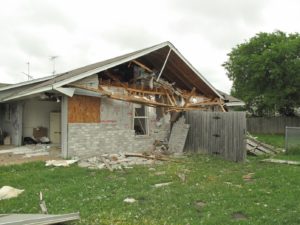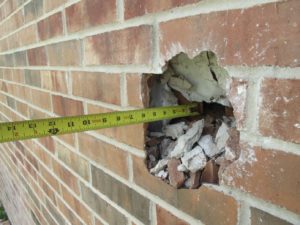It is no secret that explosions can cause damage to both the structural and nonstructural elements of a building. Explosions result in an almost instantaneous rise in air pressures; and damage to buildings and other structures is most often related to three mechanisms: heat, air pressure waves, and ground waves. For large explosions affecting many structures, it can be helpful to assess damage types for multiple structures as a means of comparison. The amount and severity of distress is expected to decrease away from the explosion origin.
Heat
Investigation of the conditions of heat-sensitive items, such as those with relatively low melting point temperatures, can help to determine the heat profile from a given explosion event.
Air Pressure Waves
The magnitude of pressure waves decreases quickly with increased distance from the explosion origin. The most severe blast-related damage from air pressure is typically located on the blast-facing components nearest to the event origin. Air pressure waves can also cause airborne debris damage to buildings and other structures.
Ground Waves
Ground waves can affect structures farther away than air pressure waves. The assessment of a structure for damages from ground motions due to an explosion is similar to the assessment for damages related to localized ground vibrations or seismic events of limited magnitude.
Nelson’s engineers are well versed in investigating the effects of explosions on the location or facility of origin, and on surrounding structures. Our licensed experts have conducted evaluations and offered fact-based opinions for many structures and components impacted by explosions. For further reading, please see Nelson Forensics’ publication Performance of Structures Subjected to West Fertilizer Company Explosion.
Would you like more information or assistance with an explosion-related investigation? Request forensic services through our website. https://www.nelsonforensics.com/request-forensic-services/




